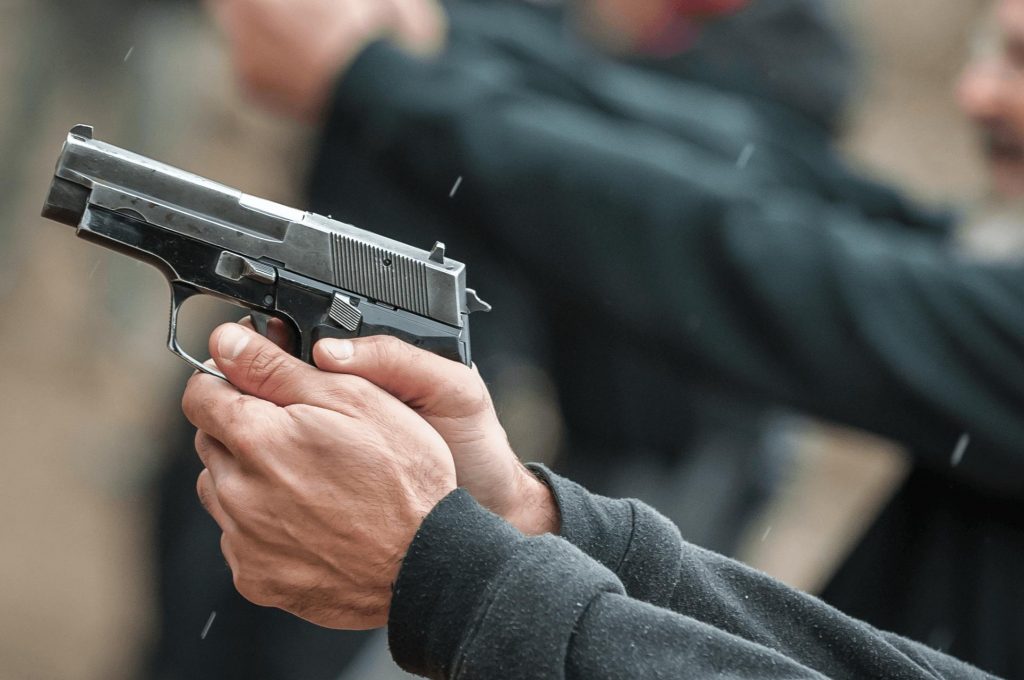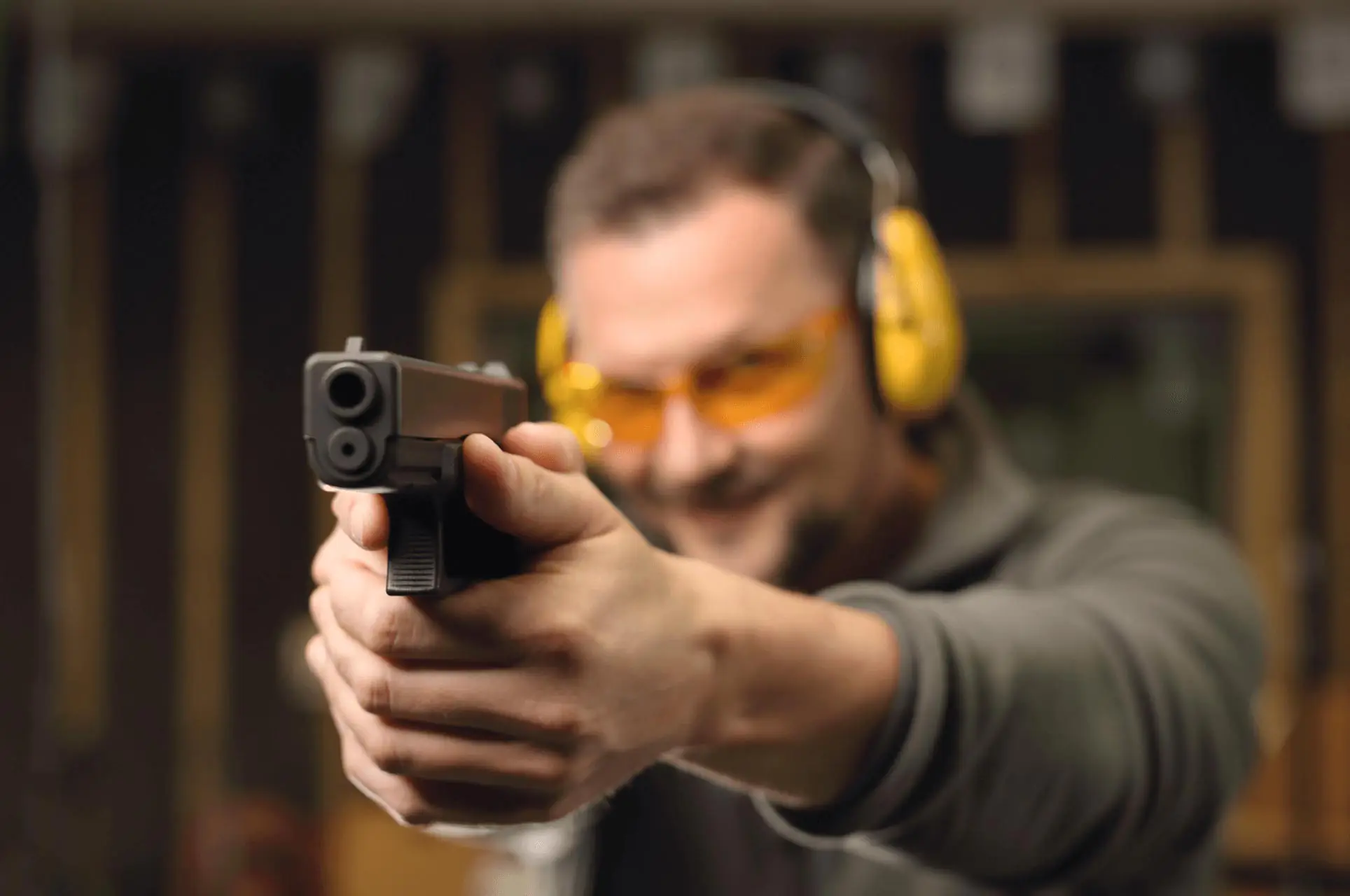It’s happened to us all: when we feel like we’re putting out fires in our professional and personal lives, training feels like something that can wait until tomorrow. Before you know it, more time has passed than you intended, and you haven’t trained for longer than you would like.
So with your valuable time and busy schedule in mind, here are some excellent firearm training exercises that you can fit into your day away from the range. These are not intended to replace dry fire or live fire practice but instead are designed to help you keep up your training when things get busy.
Sights
In high-pressure situations, your brain naturally gets your eyes to focus on the threat. However, in firearms training, we’re taught to focus on the gun’s front sight to shoot accurately in firearms training. Here’s an exercise designed to train your brain to quickly align your focus with your front sight without locking in on the more distant target.
Put your hand on your chest with your index finger pointing upwards. Next, focus on any object that is further away from your environment; this will be your ‘target.’ The ‘front sight’ of your gun will be the fingernail of your index finger. With your eyes focused on the ‘target,’ extend your arm, push your palm toward the target, and keep your finger pointed upwards. Once your fingernail breaks your eye-line to the target, shift your visual focus from the “target” to the “front sight.” The fingernail should settle over the target, with the mark appearing blurry or completely disappearing behind the nail. Repetition will help your brain pick up and focus on that closer point more quickly and consistently.
Trigger

This next exercise is all about working your index finger without disrupting the rest of your hand. The idea is to practice a very repetitive, mechanical action that will allow you to control the trigger without wiggling your hand and disrupting the sights.
Start by laying your hand on a solid surface like a desk or armrest. Then, start tapping your trigger finger, isolating all movement to only that one finger. Concentrate on the finger while relaxing the rest of the hand. It should be almost like a nervous tic, with no movement in the rest of your hand. Once you do it without any unwanted action, try to do the same thing without concentrating on the trigger finger. Try to mindlessly tap that finger while your mind is busy with another task. From time to time, look down and check that those other fingers are not moving, then go back to mindlessly tapping. Once you’re happy with your simple tapping, carry it in a scratching motion. This motion should be in a straight back-and-forth line, like moving the trigger straight to the rear, isolating the trigger finger with the scratching motion to get that finger moving in a straight line without moving the rest of your hand.
Grip
A perfect grip may not be necessary for a single shot, but well-placed, rapid follow-up shots require the best grip you can muster. Your strong-side hand should be as high on the backstrap of the handgun as possible, applying a relaxed but solid amount of pressure from the front strap to the backstrap, as if you are squeezing a set of pliers. The grip pressure should allow your trigger finger to move smoothly while applying front-to-back tension on the grip to prevent muzzle rise during recoil. A simple, economical way to improve the grip strength of your strong-side hand is to invest a small amount of money in a set of hand grip strengtheners.
While grip strength is essential, the support hand needs to exert the most force on the handgun. This clinching motion is like squeezing stress balls, making them a terrific way to simulate that grip while exercising and strengthening the support hand. If you need more resistance, grab a racquetball and start squeezing.
Keep it up
These exercises aren’t intended to replace time on the range. But they’re free and straightforward, and if you can keep at them regularly, you’ll see the difference in live-fire practice.
This article was brought to you by Kustom Signals, a leading global manufacturer of speed enforcement and police video products.

